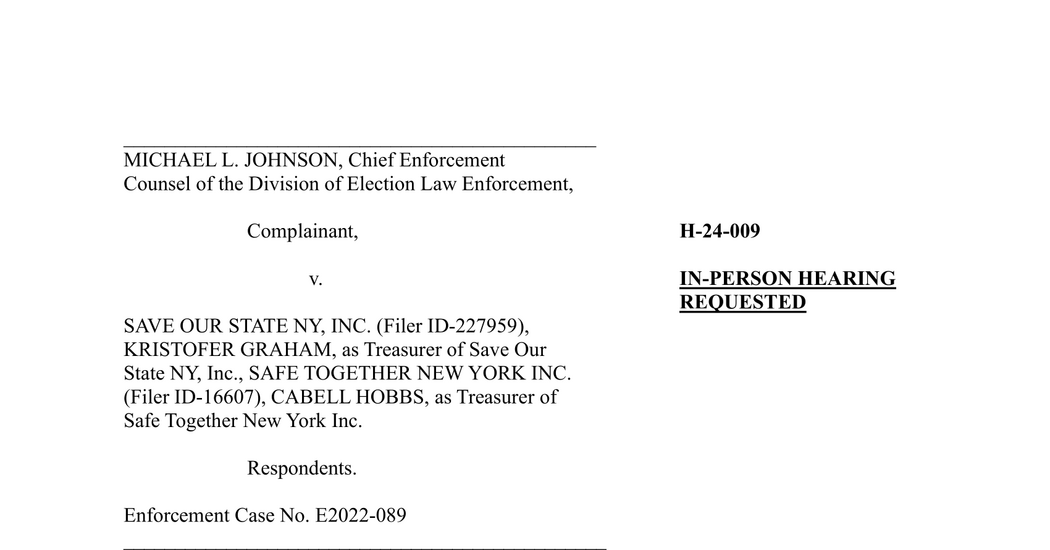
Furthermore, this discussion also did not involve any “information about the candidate’s
or opponent’s electoral campaign plans, projects, or activities that is not obtained from a publicly available source,” which is the other necessary element to trigger the “strategic discussions” coordination prong. See id. Rather, the discussion involved SOS’ own public-facing website, and
nothing more.
12. Discussions about ads, funding, polling, and meeting
The CEC materials (Report at ¶ 52, citing Norgrove Aff. ¶ 68(q)), cite communications between Messrs. Roth and McLaughlin about advertisements and funding, a suggestion by Mr. Roth about a ZFNY microsite, poll results, and a meeting with Mr. Zeldin that Mr. Roth was facilitating (CEC Exhs. 85, 87, 88). These discussions were not “strategic discussions” under
New York’s coordination law.
First, for the reasons discussed above in Section III(D)(4), Mr. Roth was not “authorized by” and “act[ing] on behalf of or at the direction of” STNY in receiving this email as STNY’s “agent” (a necessary element to trigger the “strategic discussions” coordination prong). N.Y. Election Law § 14-107(1)(d)(vii)), (g); 9 NYCRR § 6200.10(b)(2)(iii)(a)(7), (b)(8). Rather, Mr. Roth and Mr. McLaughlin were exchanging emails about the Governor’s race because they were personal friends. See Exh. A (Roth Aff.) at ¶¶ 16, 17.
Second, these emails did not involve any “information about the candidate’s or
opponent’s electoral campaign plans, projects, or activities that is not obtained from a publicly available source,” which is the other necessary element to trigger the “strategic discussions”
coordination prong, see N.Y. Election Law § 14-107(1)(d)(vii)), (g); 9 NYCRR §
6200.10(b)(2)(iii)(a)(7), (b)(8).
40
40
